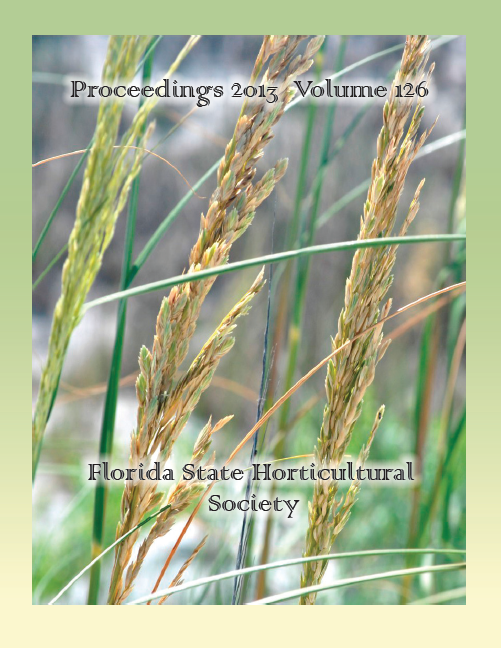Abstract
Poncirus trifoliata L. Raf. is used as a parent in citrus rootstock breeding because it confers desirable characteristics, such as disease resistance and cold hardiness. However, fruit of P. trifoliata hybrids typically have unpleasant flavor. The objective of this study was to determine the chemical composition of juice from P. trifoliata hybrids for comparison with the fruit of P. trifoliata. Six hybrids were studied: the female parent (5-14-96, 1/8 P. trifoliata), the male parent (1-11-7, no P. trifoliata), and four siblings (6-49-96, 6-49-116, 6-49-148, and 6-49-163, all 1/16 P. trifoliata). Juice from these hybrids was analyzed for volatiles, flavonoids, limonoids, sugars, and acids. Juice of P. trifoliata was also analyzed. The volatile profile of juice from the female parent showed the most similarity to P. trifoliata, with many sesquiterpene hydrocarbons and esters. The hybrid 6-49-163 presented a similar pattern regarding volatile composition. However, another hybrid, 6-49-116, also presented the high content of limonoids and flavonoids measured in the female parent and in P. trifoliata. For these preliminary results, we observed differences among siblings with the same parents based on their secondary metabolite composition. Complex differences in volatiles, limonoid and flavonoid compounds among P. trifoliata hybrids were revealed in this study. When eventually correlated with sensory data, our results could be used to evaluate the chemical basis of juice quality and thus select P. trifoliata hybrids for consumption.

